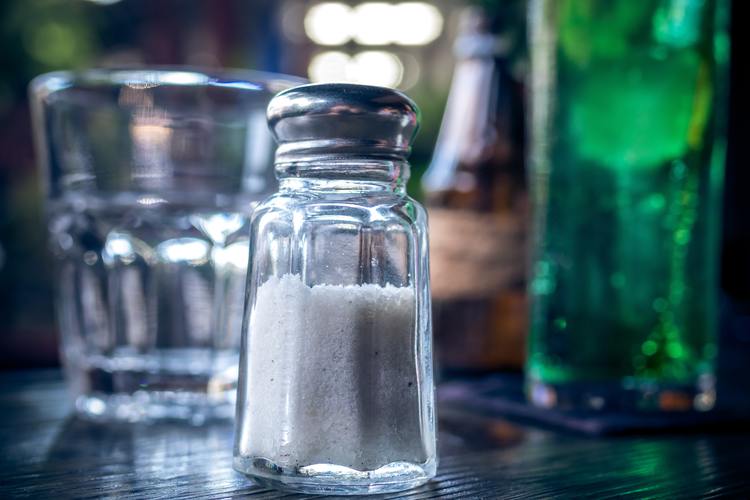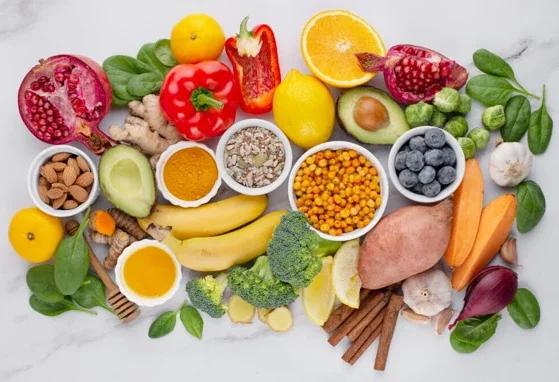7 salty truths about sodium for World Salt Awareness Week 2021

A staggering 17,9 million deaths worldwide (or 30% of total deaths) are as a result of cardiovascular diseases.
It’s not surprising then, that the World Health Organisation (WHO) has set a target: To reduce the global average dietary salt intake by 30% by 2025. After all, a growing body of scientific evidence makes it clear that there is a direct link between salt intake – more specifically, the sodium in salt - and blood pressure. Furthermore, high blood pressure triggers cardiovascular diseases, renal disease, stroke, etc. A simple reduction in salt intake can significantly reduce these risks, and does so cost effectively, too.
While there is growing awareness of the imperative to limit salt intake (WHO recommends less than 5g, or one teaspoon, of salt per adult, per day)2, many individuals still do not understand the nuances of managing their dietary salt intake correctly. As a result, the average adult is still consuming double this recommended amount.
It’s no news that processed, fast and convenience foods are often the culprit – they contain excessive amounts sodium and many packaged convenience foods contain MSG (monosodium glutamate) – the sodium-rich flavourant. Even some seemingly ‘healthy’ foods and sauces, are laden with excessive sodium, including soy sauce , canned vegetables in brine (a salt solution to preserve foods), cheese including cottage cheese (a serving of ½ cup has an average of 350mg of sodium) and vegetable juices.
To reduce sodium intake, avoid adding it in food preparation and practice making healthier snack choices while opting to avoid salty snacks. Additionally, one could become adept at reading food labels to identify sodium/salt-based additives and ingredients, such as MSG.
7 facts about salt and sodium
- Sodium (in salt) is imperative for maintaining healthy bodily functions.
- Specifically, it plays a role in maintaining blood plasma volume (which in turn impacts blood pressure), the body’s pH balance and the transmission of nerve impulses, among other things.
- When there is an excess volume of sodium, more water is pulled into the blood stream, increasing the volume of the blood; this explains why the heart strains more to pump blood throughout the body.
- Sodium deficiency can cause hyponatremia, muscle twitches, dizziness & seizures.
- Salt is found naturally in low levels in most of our whole foods.
- Thus, the addition of salt during food preparation is not necessary.
- Salt/sodium is hidden in processed foods.
- Experts estimate that 80% of our salt intake, comes from processed foods and condiments.
- Sodium makes up 40% of salt. Therefore, if a food label lists the sodium content, the actual salt content is 2,5 times this figure.
- Potassium is believed to diminish the negative effects of sodium, in the body.9
Share these practical tips with your patients:
- Do not add salt during food preparation or place a salt shaker on the table during meals.
- Replace processed snacks with healthier whole food alternatives.
- For example, snack on raw nuts instead of salted crisps or salted nuts.
- Consider making your own stock for soups and sauces, as the store-bought versions are usually laden with salt.
- Choose products with reduced sodium, but with the understanding that less sodium does not equate to less salt.
- Consider a few clever food substitutions to make meals and snacks flavourful without the addition of salt.
- Herbs, spices, citrus, tomato paste, garlic and spring onion all satisfy the tastebuds, by adding more flavour to food.
- Jams, natural fruit juices & yoghurt can be used to marinade or glaze meats, instead of salt-laden rubs and store-bought marinades (be aware of the sugar content, however).
- Store-bought salad dressing can be replaced with herb-infused virgin cold-pressed olive oil (this is easy to make, at home).
- Even ‘healthy’ salts, such as sea salt or Himalayan salt, remains sodium chloride.
- Patients with conditions related to heart failure or kidney diseases are urged to keep their sodium intake under 2 000 mg per day.7
- Individuals who have conditions such as kidney or liver disease, heart disease or high blood pressure should beware of using salt substitutes. These typically replace the sodium chloride with potassium chloride; and an influx in potassium could exacerbate these conditions.
- Iodine (a mineral that is essential to healthy thyroid function in the body) is usually obtained from our food. However, some populations are found to have iodine deficiencies and therefore, it is mandatory for salt to be fortified with potassium iodate, to boost iodine intake. This is the case for countries in Africa.
For more healthy recipe ideas, visit the NIIA website.
- Who.int. 2021. Cardiovascular diseases. [online] Available at: <https://www.who.int/health-topics/cardiovascular-diseases#tab=tab_1> [Accessed 13 March 2021].
- Who.int. 2020. Salt reduction. [online] Available at: <https://www.who.int/news-room/fact-sheets/detail/salt-reduction> [Accessed 12 March 2021].
- Tekle, D., Santos, J., Trieu, K., Thout, S., Ndanuko, R., Charlton, K., Hoek, A., Huffman, M., Jan, S. and Webster, J., 2020. Monitoring and implementation of salt reduction initiatives in Africa: A systematic review. The Journal of Clinical Hypertension, [online] 22(8), pp.1355-1370. Available at: <https://www.ncbi.nlm.nih.gov/pmc/articles/PMC7496579/> [Accessed 13 March 2021].
- Harvard Health. 2006. Take it with a grain of salt - Harvard Health. [online] Available at: <https://www.health.harvard.edu/heart-health/take-it-with-a-grain-of-salt#:~:text=Salt%20in%20circulation&text=One%20teaspoon%20of%20sodium%20chloride,maintain%20a%20proper%20fluid%20balance.> [Accessed 10 March 2021].
- Healthline. 2020. 30 Foods High in Sodium and What to Eat Instead. [online] Available at: <https://www.healthline.com/nutrition/foods-high-in-sodium#The-bottom-line> [Accessed 17 March 2021].
- Emro.who.int. 2021. WHO EMRO | Reducing salt/sodium consumption to prevent and control noncommunicable diseases in the Eastern Mediterranean Region | Publications | NCDs. [online] Available at: <http://www.emro.who.int/noncommunicable-diseases/publications/questions-and-answers-on-reducing-saltsodium-consumption-to-prevent-and-control-noncommunicable-diseases-in-the-eastern-mediterranean-region.html> [Accessed 12 March 2021].
- Harvard Health. 2006. Take it with a grain of salt - Harvard Health. [online] Available at: <https://www.health.harvard.edu/heart-health/take-it-with-a-grain-of-salt#:~:text=Salt%20in%20circulation&text=One%20teaspoon%20of%20sodium%20chloride,maintain%20a%20proper%20fluid%20balance.> [Accessed 10 March 2021].
- Worldactiononsalt.com. 2021. Which Foods Contain Salt? - World Action on Salt & Health. [online] Available at: <http://www.worldactiononsalt.com/less/how/whichfoods/> [Accessed 11 March 2021].
- Medicalnewstoday.com. 2017. Salt: Uses, effects, and sources. [online] Available at: <https://www.medicalnewstoday.com/articles/146677#reading_food_labels> [Accessed 13 March 2021].
- Health Essentials from Cleveland Clinic. 2018. Are Salt Substitutes a Healthy Way to Lower Your Sodium Intake?. [online] Available at: <https://health.clevelandclinic.org/are-salt-substitutes-a-healthy-way-to-lower-your-sodium-intake/> [Accessed 16 March 2021].
- Food Facts. 2019. Iodation of Salt - Food Facts. [online] Available at: <https://foodfacts.org.za/iodation-of-salt/> [Accessed 17 March 2021].
If you liked this post you may also like




